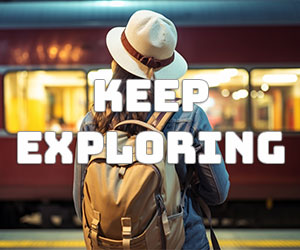Alaska is a state like no other in the United States. It’s the biggest state, filled with natural wonders and a rich cultural heritage. Its remote landscapes and unique traits make it a standout destination for visitors.
What Makes Alaska Unique and Different from Other States

Located at the far north, Alaska doesn’t share borders with any other state. It’s the only state touching both the Arctic Ocean and the Pacific Ocean. Plus, you can’t drive from its biggest cities to its capital, adding to its adventurous feel.
Some parts of Alaska are in the Arctic Circle, making it the only state in this region. This means long, cold winters and short, mild summers. The state’s vast wilderness, with its high mountains and wide tundra, adds to its unique charm.
Alaska’s culture is rich, thanks to the diverse indigenous communities living there for thousands of years. Many Alaskans still hunt, gather, and live off the land. This deep connection to the earth is a key part of their lives.
So, Alaska’s mix of remote beauty, cultural depth, and unique features makes it a special place in the U.S. It stirs the imagination and brings wonder to all who see its vast, untouched beauty.
1. Weather
Alaska is known for its extreme climate, with weather as tough as its landscape. Long, cold winters and mild summers have made its people very adaptable. Temperatures can drop below -40°F in some areas.
Despite the tough weather, Alaskans are proud of living in such a challenging place. They see the cold and changing seasons as part of their life. When the weather makes parts of the country shut down, Alaskans see it as an adventure.
The weather in Alaska shows how unique the state is. It goes from very cold winters to mild summers. This tough weather has made Alaskans very resilient. They’ve learned to live well, even in the harshest conditions.
2. Engineers have to take on arctic engineering course
Building in Alaska’s tough climate needs special skills and training. Engineers on Alaskan projects must finish an “arctic engineering” course. This course teaches them how to make structures that can handle the state’s harsh weather. They learn about permafrost, snow and ice loads, and using materials that work well in extreme weather.
Arctic engineering shows the need for creativity and flexibility in Alaska’s infrastructure projects. Building roads, bridges, and buildings against Alaska’s strong forces requires a deep knowledge of the Arctic. Engineers must think about the environment and the practical needs of building to make projects last.
With special training and a dedication to solving Alaska’s climate challenges, engineers are key to the state’s infrastructure. Their work helps Alaskan communities have the buildings and systems they need to survive. Even in the harsh Arctic conditions, their efforts make sure communities can thrive.
3. Hunting and gathering is a way of life

In Alaska, hunting and gathering are more than hobbies. They are a key part of life. The state’s vast wilderness and rich resources let people gather wild game, fish, berries, and more. This shows the self-reliance and adaptability of those living in Alaska’s remote areas.
Hunting and gathering are not just for food. They are a big part of Alaska’s culture and identity. These traditions have been passed down, creating a strong bond with the land. Alaskans value these practices, showing their self-reliance and harmony with the wild.
Alaskans use their skills to track game, set nets, and forage for food across the tundra and forests. Their deep knowledge of nature helps them get food in a sustainable way. This shows their resilience and adaptability in Alaska’s tough yet rich environment.
4. Large portions of the state are inaccessible via road

Alaska is vast and sparsely populated, making transportation a big challenge. The state’s Remote Alaska geography and limited roads mean many areas can’t be reached by car. Communities in rural areas often need planes, boats, or ferries to get around.
The short building season in Alaska makes it hard to keep up with road maintenance. This means Alaska depends a lot on air and water travel. This setup brings unique challenges for Alaskans, who have to adjust to the changing seasons and geography.
Despite the challenges, Alaska’s lack of roads adds to its rugged beauty and adventure. Visitors can explore untouched places and truly experience the wild nature. This is quite different from the well-connected roads in the rest of the U.S.
5. Time instead of distance used to measure road travel
In Alaska, measuring road travel by time is more common than by distance. People often say “it’s 2 hours to Anchorage” or “we’re 4 hours out of Talkeetna.” This shows how the vast Alaskan landscape and unpredictable travel conditions shape how people plan their trips.
Alaska’s vastness and tough weather make driving times change a lot. Weather, road conditions, and the state’s size all affect how long it takes to get from one place to another. Using time to measure travel helps locals plan better, rather than sticking to a fixed distance system.
This way of thinking, focusing on time over distance, shows Alaska’s unique way of dealing with its tough terrain. It’s a smart way to handle the state’s challenges. For those used to measuring travel by distance, Alaska’s time-based system might seem odd. Yet, it shows how Alaskans have learned to live and travel in this challenging environment.
6. Boroughs not Counties
Alaska is different from most U.S. states because it doesn’t have counties. Instead, it has boroughs for local government. This shows Alaska’s unique needs and desire for more control.
Boroughs in Alaska handle fewer tasks than traditional county governments. They focus on specific services and infrastructure. This lets them manage their governance based on their local challenges and priorities.
Alaska’s Unorganized Borough is another interesting part of its local government. It covers over half the state and doesn’t have a borough government. The Alaska state government manages it, showing the state’s preference for centralized control in some areas.
The boroughs in Alaska show the state’s dedication to a customized local government system. This system gives Alaskan communities more control over their services and policies. It makes Alaska stand out from the more uniform county system in the U.S.
7. Rugged individualism
Alaska is seen as the last place in the U.S. where true rugged individualism thrives. Its vast wilderness and remote areas create a culture of self-reliance. People here value their freedom to live life their way, without outside pressure.
This spirit of the frontier is key to the Alaskan way of life. It draws those wanting to break free from society’s norms and make their own way. Alaskans are known for their independent nature, valuing self-reliance and being different from others.
Alaskans might homestead in the wild, run small businesses off the grid, or just live life as they see fit. This spirit of self-reliance and being different has shaped Alaska’s culture. It draws pioneers who want to live freely, away from the mainstream.
8. Contains the most western, the most northern and the most eastern point in the United States

Alaska is the biggest state in the U.S. and has a special place on the map. It’s the only state with the most western, northern, and eastern points in the country. The westernmost point is on the Aleutian Islands, the northernmost on the Arctic coast, and the easternmost near the Canada border.
This location covers many time zones and climates, showing Alaska’s vastness and variety. Being the only state with these extreme points makes Alaska stand out. From the Aleutian Islands to the Arctic tundra and forests, Alaska’s beauty and challenges are unmatched.
Alaska’s northernmost point shows its unique spot in the far north. It marks the U.S.’s farthest reach. The westernmost point on the Aleutian Islands shows Alaska’s western edge. The easternmost point near Canada shows its place on the continent.
9. Only continental state not sharing a border with another state
Alaska sits in the far north of North America, holding a unique spot among U.S. states. It’s the only state not touching another state, making it stand out. Its distance from the lower 48 states, across the Canadian province of British Columbia, highlights its independence and ruggedness.
This fact makes Alaska special as a U.S. state. Surrounded by oceans and Canada, it fosters a strong sense of self-reliance among its people. Without nearby states, Alaskans have had to be resourceful to survive in its tough environment.
Alaska’s isolation affects its culture and society, bringing unique challenges in infrastructure and services. Its size and remote spot need creative solutions and a strong will to overcome harsh conditions. This spirit of resilience and adaptability defines life in Alaska, making it distinct from other states.
9. Alaskans are generally reserved
Alaskans are known for being reserved in social settings. This comes from the state’s history of rugged individualism. Living in remote, harsh places made self-reliance a must. They keep to themselves but will help strangers in need.
This attitude of quiet confidence and independence defines Alaskans. It shows in their social norms and their strong sense of self. They value their privacy and keep their feelings private.
Alaskans are direct and less open in their interactions. This shapes how they connect with others. It builds a strong sense of self-reliance and respect for personal space in the Alaskan culture.
If you enjoyed this story, we think that you will also enjoy this other story on what makes Arizona such a unique state in the United States of America.


